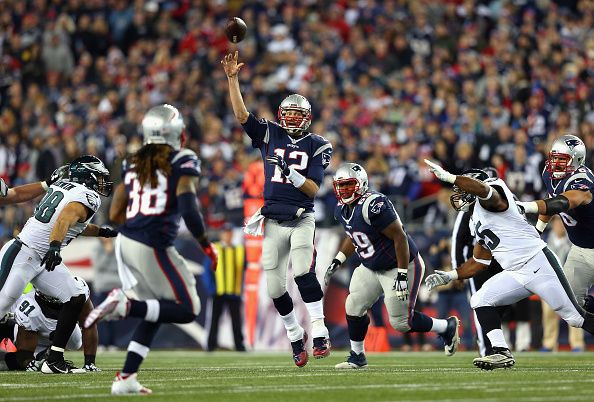NFL Stats 2015: Passing Numbers Continue Slow But Steady Increase

It is often said the NFL is a passing league, largely dominated by quarterbacks who can pass from the pocket and move their offenses down the field with regularity.
But exactly how much passing is done in the NFL in comparison to running the football? And how many of those passes are completed? Over the past couple of seasons, the league-wide numbers have been remarkably consistent. Here, we take a look at how pass attempts stack up against rush attempts over the past couple of years.
In 2013, there were a total of 18,136 pass attempts in the NFL and 13,871 rushing attempts, making pass plays the call 56.6 percent of the time. In 2014, the number of overall plays run dropped from 32,007 to 31,567 but the percentage of play type remained the same. The 17,879 pass plays were again good for 56.6 percent of the play calls. Through 14 weeks and one game of the NFL season, 14,907 of the 25,846 plays run have been passes, giving the percentage number a slight uptick to 57.7 percent.
Since the pass holds a several-thousand attempt advantage over the run in terms of being the play call, how many of those pass attempts have actually been completed? In 2013, 11,102 passes ended up in a receiver’s hands, good for a 61.2 percent completion rate. That percentage increased to 62.6 in 2014 as 11,200 passes were completed. In 2015, the slightly abbreviated numbers tell us 9,418 passes have been completed for a 62.9 percentage.
Two seasons ago there were nine quarterbacks who threw for 4,000 yards or more, including two that eclipsed 5,000 yards. Last year, no quarterback reached the 5K plateau but 11 threw for 4,000 yards-plus. So far this season, two quarterbacks (Tom Brady and Carson Palmer) have surpassed 4,000 with as many as 10 others in the hunt.
Statistics alone aren’t to be taken in a vacuum but they do give us an indication of what play type ends up being more favored over the course of an NFL season. Not only is the pass becoming slightly more favored in 2015 but the result of the play has remained consistent over the past three years. There hasn’t been a severe increase in the percentage of passes completed but the percentage has gone up slightly in each of the seasons since 2015.
What do these numbers tell us? Largely, they explain what was already apparent. At this rate, steady quarterback play and the ability to move the offense through the air should remain teams' offensive strategy for the foreseeable future.
© Copyright IBTimes 2025. All rights reserved.





















